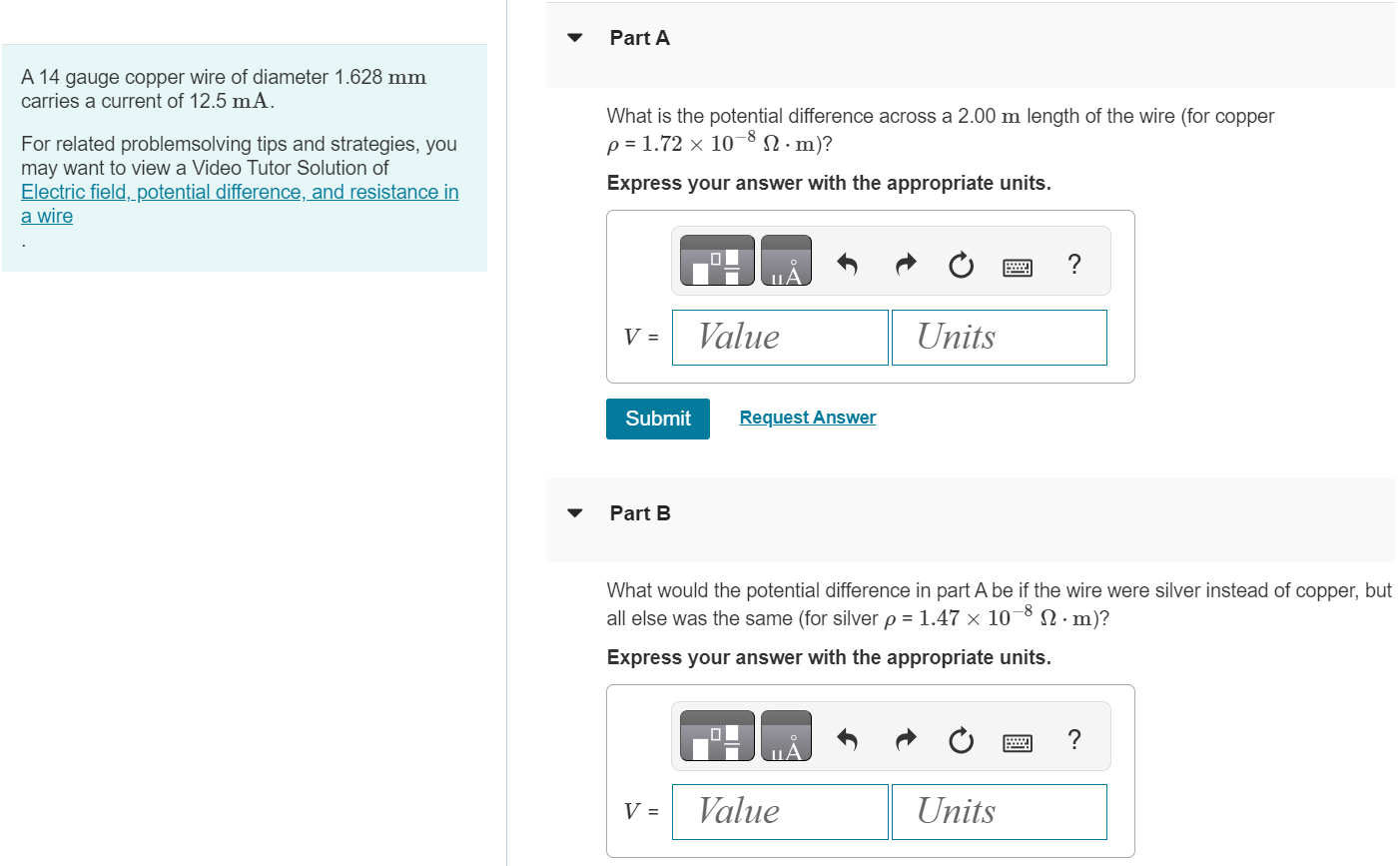A 14 gauge copper wire of diameter 1.628 mm carries a current of 12.5 mA. For related problemsolving tips and strategies, you may want to view a Video Tutor Solution of Electric field, potential difference, and resistance in a wire Part A What is the potential difference across a 2.00 m length of the wire (for copper ρ = 1.72×10−8 Ω⋅m) ? Express your answer with the appropriate units. Submit Request Answer Part B What would the potential difference in part A be if the wire were silver instead of copper, but all else was the same (for silver ρ = 1.47×10−8 Ω⋅m )? Express your answer with the appropriate units.
